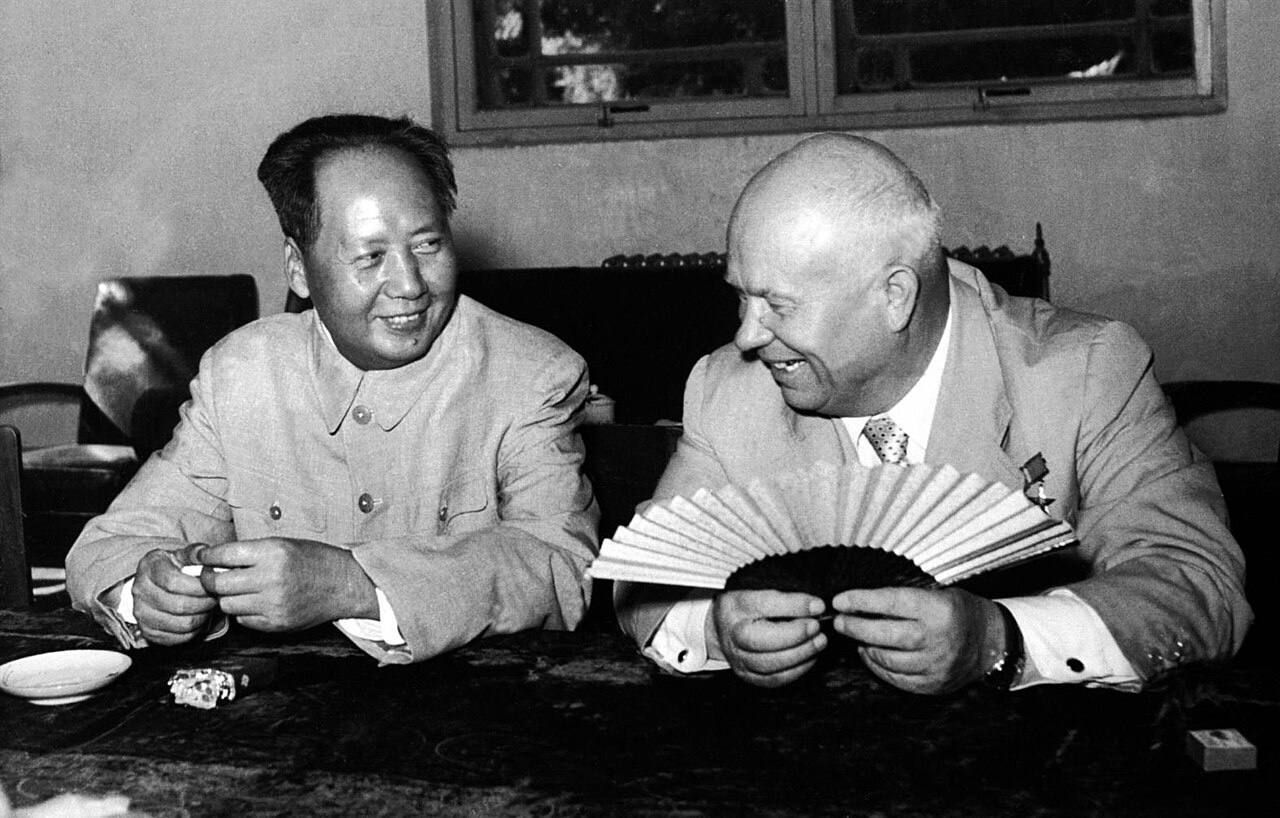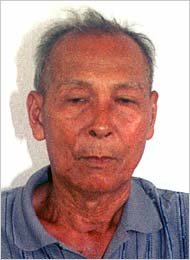Alongside Albania Democratic Kampuchea was the only other sovereign state to take the side of China during the Sino-Soviet split.
Yet despite what many people think Pol Pot was not originally a Maoist and the movement of the Khmer Rouge to the Chinese camp had as much to do with circumstance as it did ideology.
The Sino-Soviet Split
The Sino-Soviet split occurred when Khrushchev and Mao essentially disagreed over who should lead the communist world, as well as opposing views on Joseph Stalin. In particular China being anti-De-Stalinization.
This led to huge split within the socialist block with those aligned to the USSR claiming to be adhering to Marxism-Leninism, while those who sided with China were considered anti-revisionist. There ideology of Marxism-Leninism-Maoism also came to be.
Yet while many communist parties and armed groups, such as the New Peoples Army sided with the Maoists, Albania was the only sovereign state to side with the Chinese.
The Kampuchean Peoples Revolutionary Party
The Kampuchean Peoples Revolutionary Party (KPRP), the first truly indigenous communist party were for the most part reliant on and in support of Vietnam and the Viet Minh. At this point though the seeds of the Sino-Soviet split had not yet been sown and in general both China and the Soviet Union were considered Vietnamese and thus Cambodian allies.
The Workers Party of Kampuchea
The Workers Party of Kampuche was formed in 1960 as a successor to the KPRP after many members had withdrawn to Vietnam.
It was formed after a dispute between the urbane and rural factions. The former being pro-Sihanouk and the later seeing him as a feudal figure.
Yet despite what people think it was the urban pro-Sihanouk faction that won, with Tou Sanmouth becoming leader of the party.
Sanmouth was executed in 1962, either by the government or those involved with the Cercle Marxiste. Regardless of who fired the bullet Pot Pot and his cohorts were to take over the party and those the move towards China would begin.
Pol Pot and China
At the beginning at least there is no clear evidence that Pol Pot was pro-china, although as things such as the Cultural Revolution began his own extremist views started to marry with those of China.
Yet despite this and indeed his anti-Vietnamese views were kept in check as he tried to build a united front to take power. Interestingly at this time Pol Pot would have been fully aware that while he was fighting against Sihanouk, Sihanouk himself was firm friend and ally of China and North Korea.
Pol Pot though would visit the Peoples Republic of China in 1965 in a trip that he fully admits affected him greatly from an ideological point of view.
The unholy alliance
Things were gain to change in 1970 when Sihanouk was overthrown. This led to China persuading its two allies, Pol Pot and Sihanouk to join forced. This alliance known as the GRUNK would also be supported by both the Vietnamese and the Soviet Union.
Pol Pot would again visit China during the 1970’s with his 1997 visit seeing him driven around Beijing in an open-limo whilst 100,000 Chinese welcomed him. This was particularly perverse as Cambodia was at the time at the height of the Killing Fields.
And it was during these early meetings, as well as the funding and ideological tutelage that much of what Democratic Kampuchea tried to achieve was born.
Chinese influence on the Khmer Rouge
While Pol Pot and Angkar’s ideology was very much homegrown they did listen to and seek inspiration from the Chinese. One of the first actions in this sense was the change in the name of the party from the Workers Party of Kampuchea into the Communist Party of Kampuchea. This occurred in 1966 at the behest of the Chinese and after the first visit of Pol Pot.
Yet while inspiration was indeed drawn there was always the undertones of Khmer ultra-nationalism. This is nest evidenced by the Super Great Leap Forward whereby the achievements of the Great Leap Forward would be achieved in just 4 years, because in the eyes of Pol Pot Khmer’s were simply superior.
This also took its toll during the Killing Fields with death camps like S-21 not trying to kill everyone, but to cull non-revolutionary, or anti-communists extra quick in order to achieve self-sustaining communism much quicker. This isn’t turn was tied in with Democratic Kampuchea trying to raise enough money within 4 years to embark on a huge industrialization.
The fall of the Khmer Rouge
After the death of Chairman Mao and the rise of Deng Xiaoping ideological life changed in China. This though something seemingly ignored by Democratic Kampuchea who thought that China would assist them in any war with Vietnam. Instead after their fall China merely launched a punitive attack against the Vietnamese.
The Khmer Rouge though would again launch an insurgency after their fall from power which was openly supported by the Chinese, who feared being surrounded by Soviet allies. It was also supported by western powers who recognized the Democratic Kampuchea government as the “rightful” government of the country.
And China was to continue supporting, arming and training the Khmer Rouge fully until the end of the 1980’s and some have argued as late as 1993, when the Khmer Rouge would boycott elections and form a breakaway state.
During this period ideological concerns were simply thrown out of the window in favour of geopolitical issues. This was particularly emphasized by the fact the Communist Party of Kampuchea renaming itself the Party of Democratic Kampuchea that was I name at least “democratic socialist”. In reality Pol Pot and his cohorts had some form of dictatorial “Socialism with Cambodian characteristics” in mind.
Quite ironically and in spite of the fact that for much of his rule China were trying to kill Hun Sen and the Cambodian People’s Party China is once again the biggest financier and ally of what is now the Kingdom of Cambodia.




